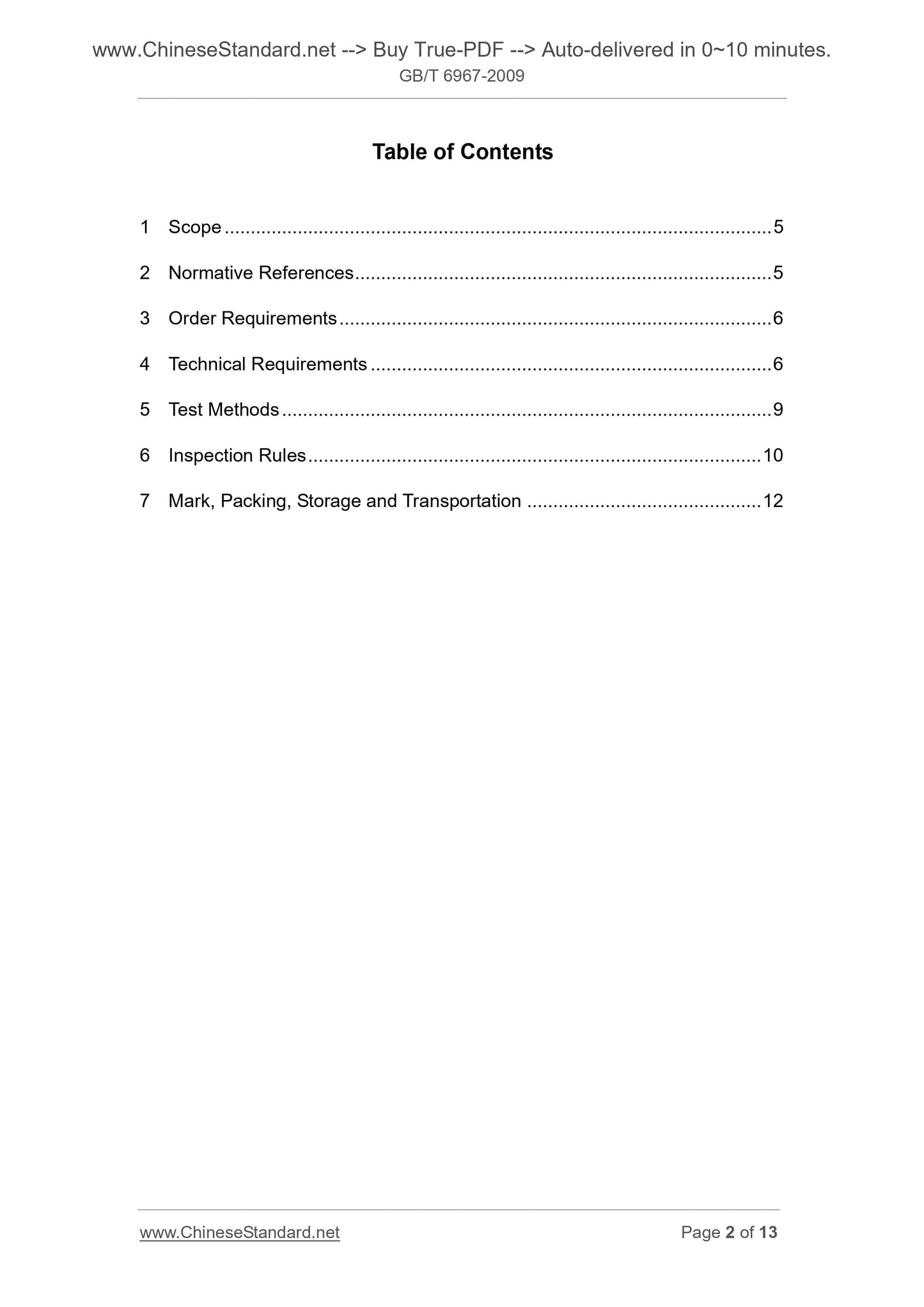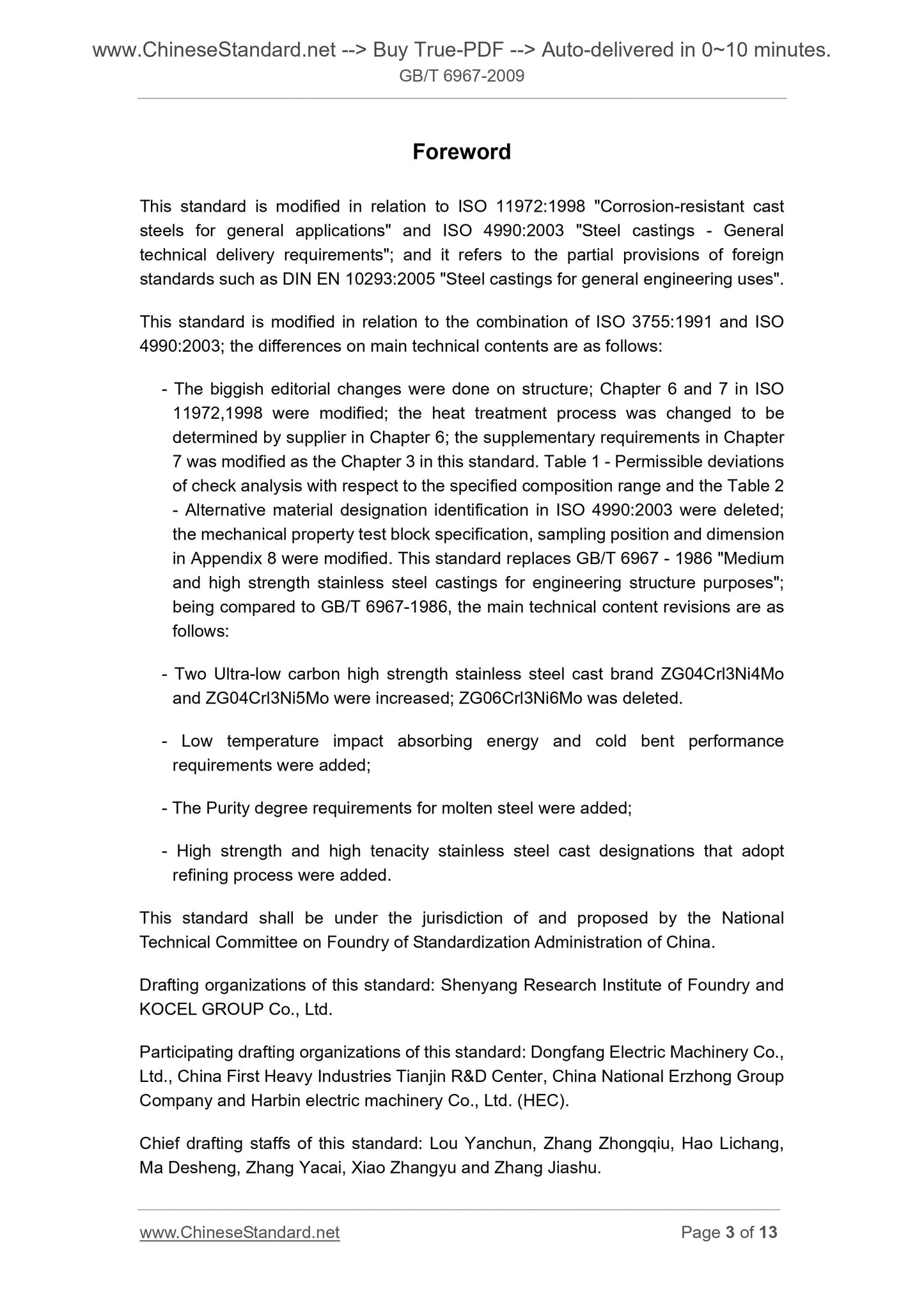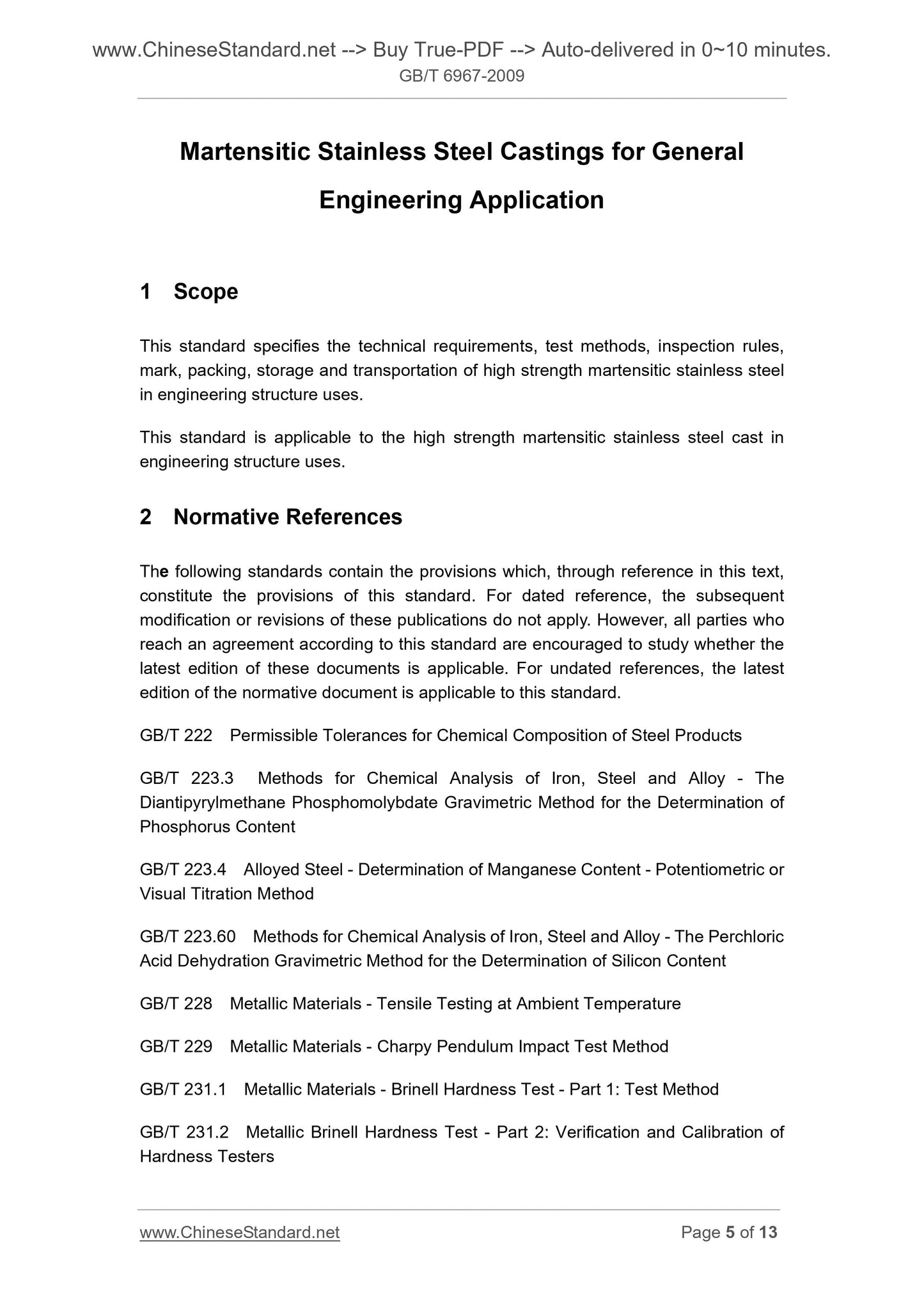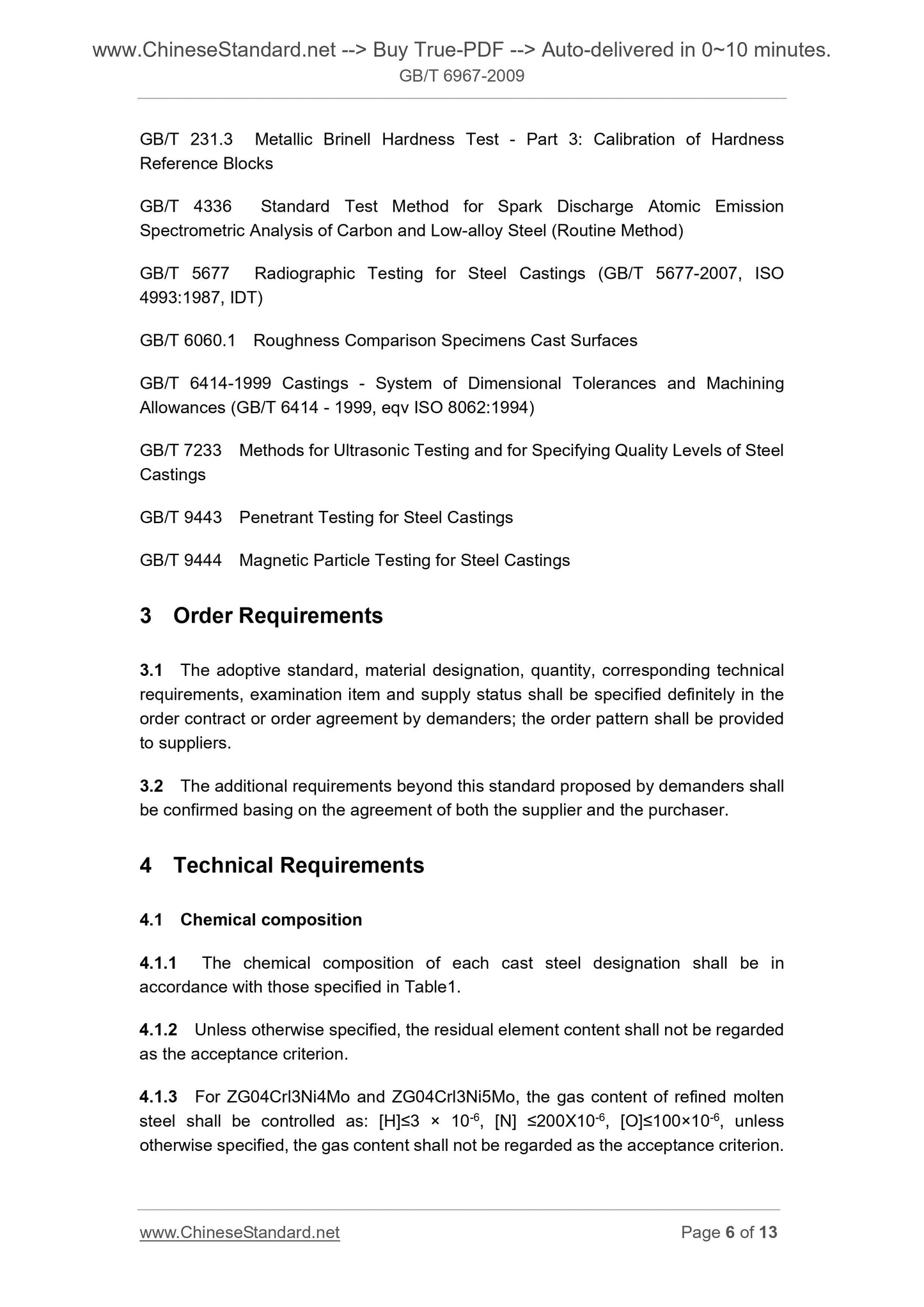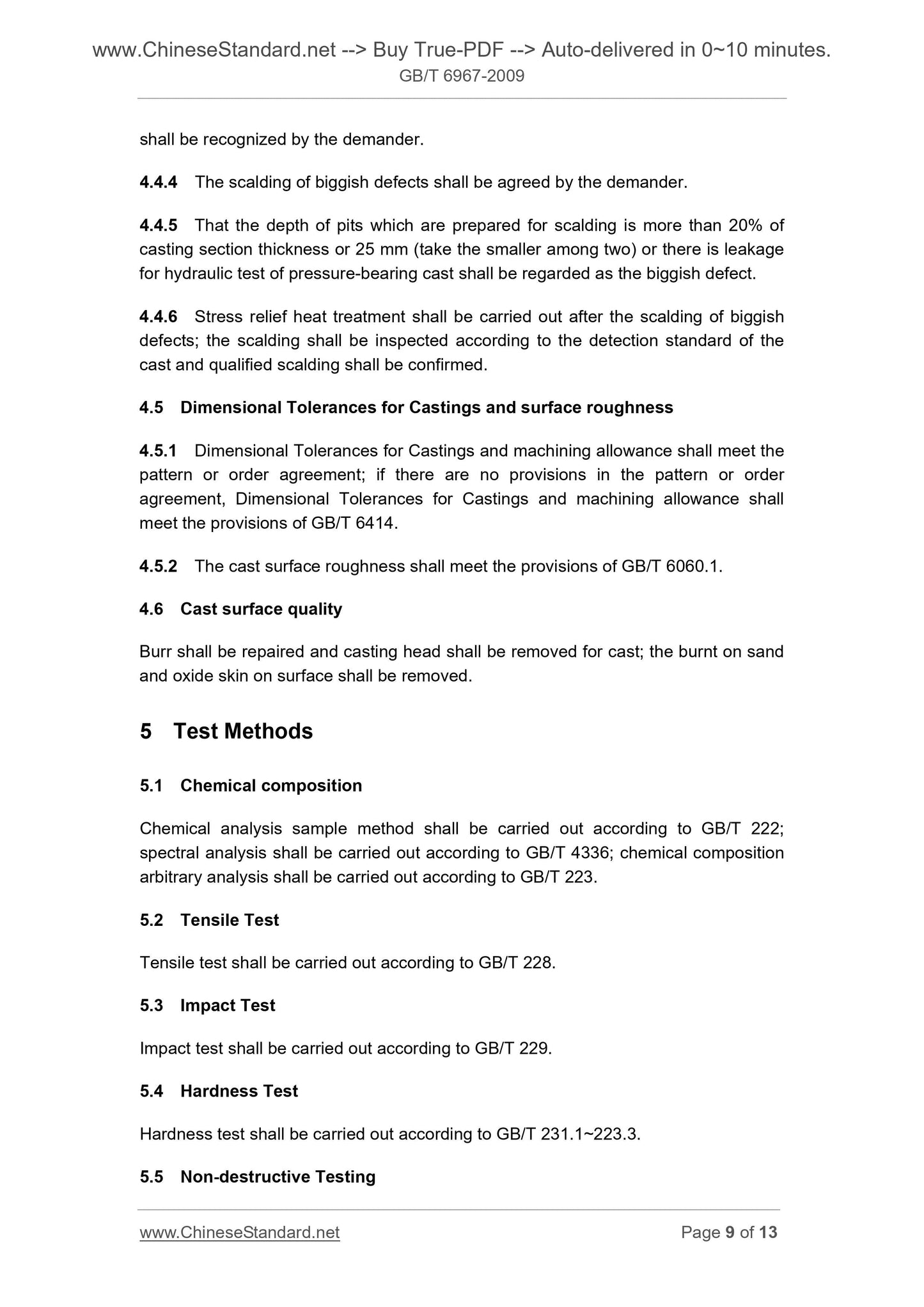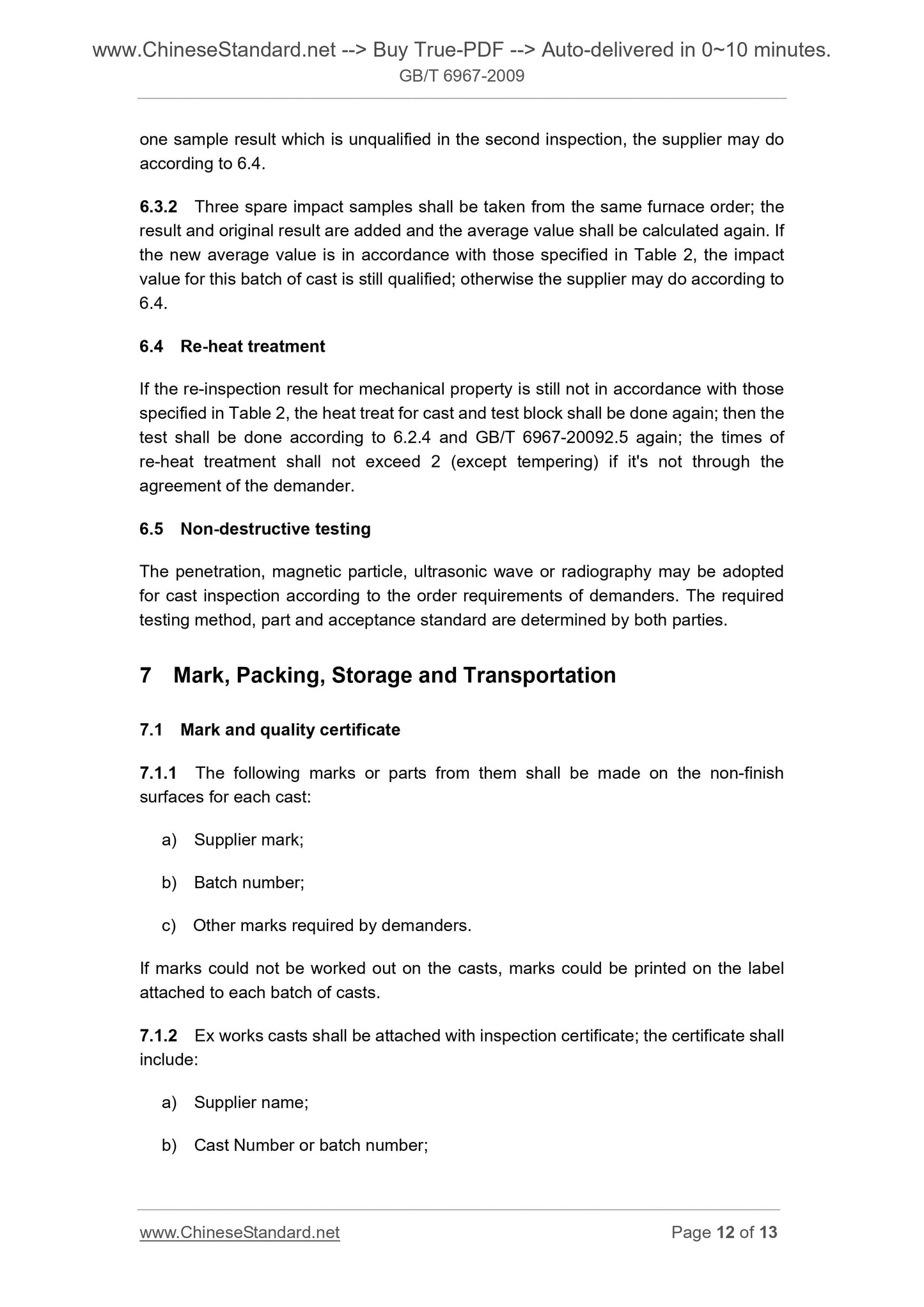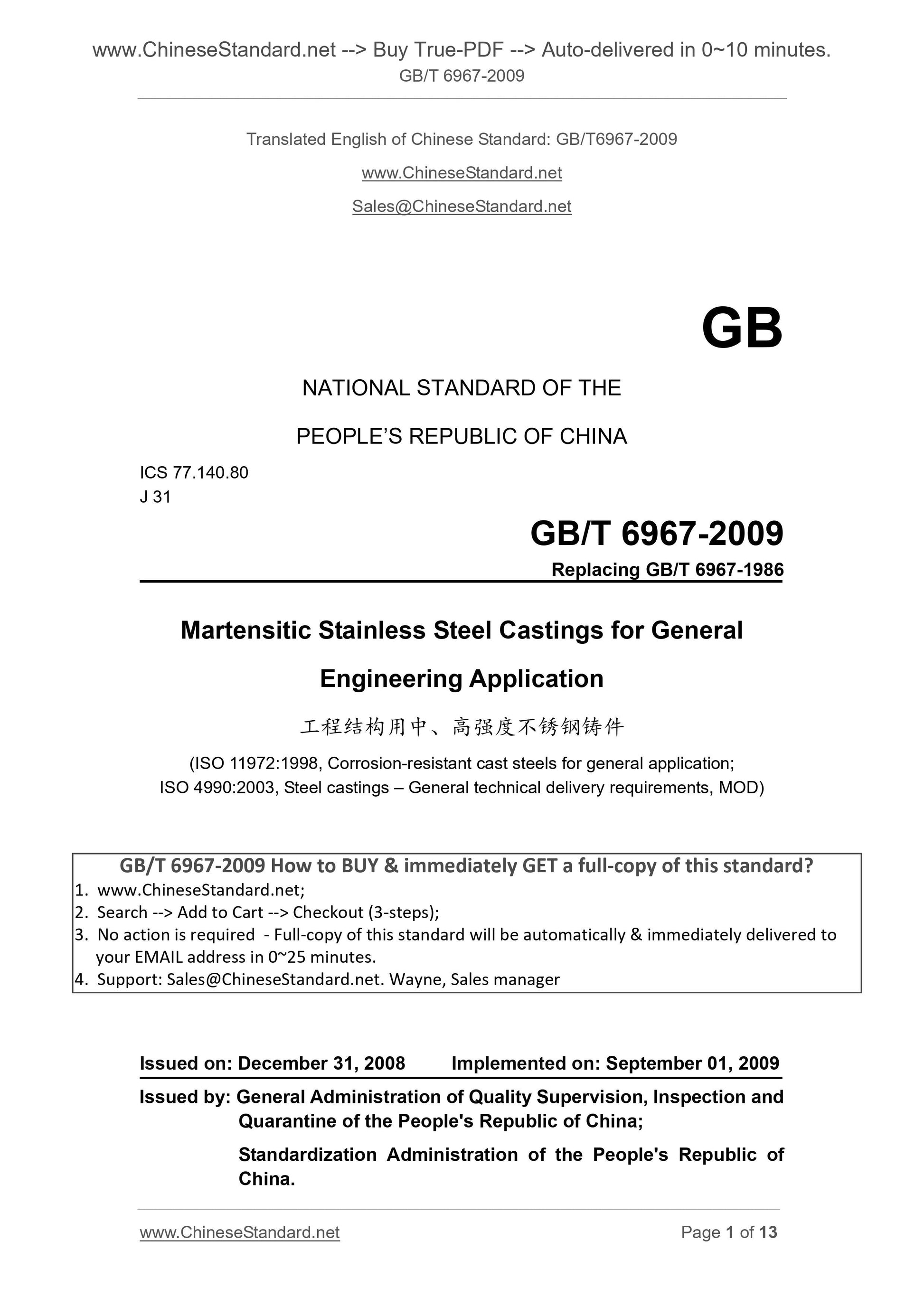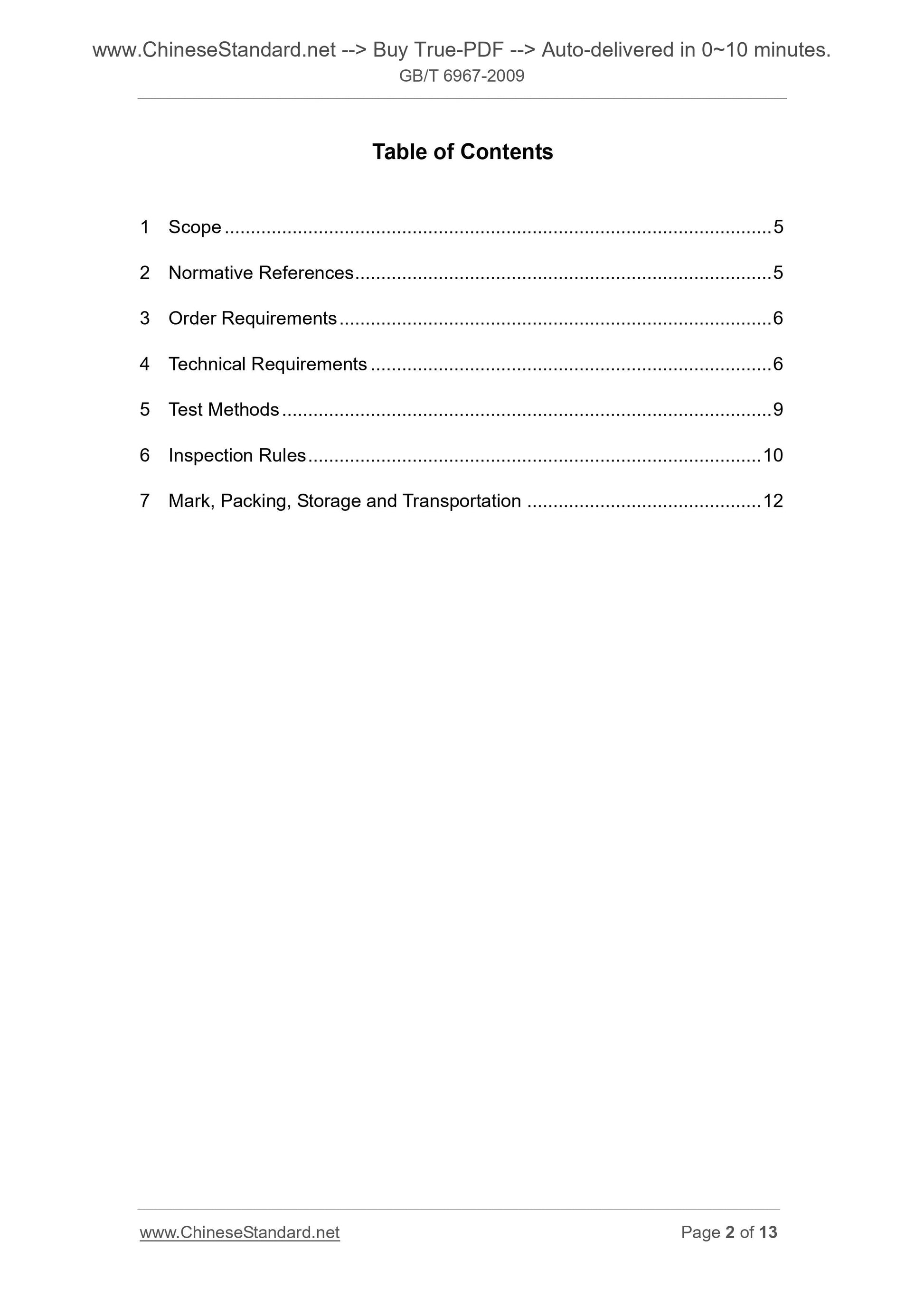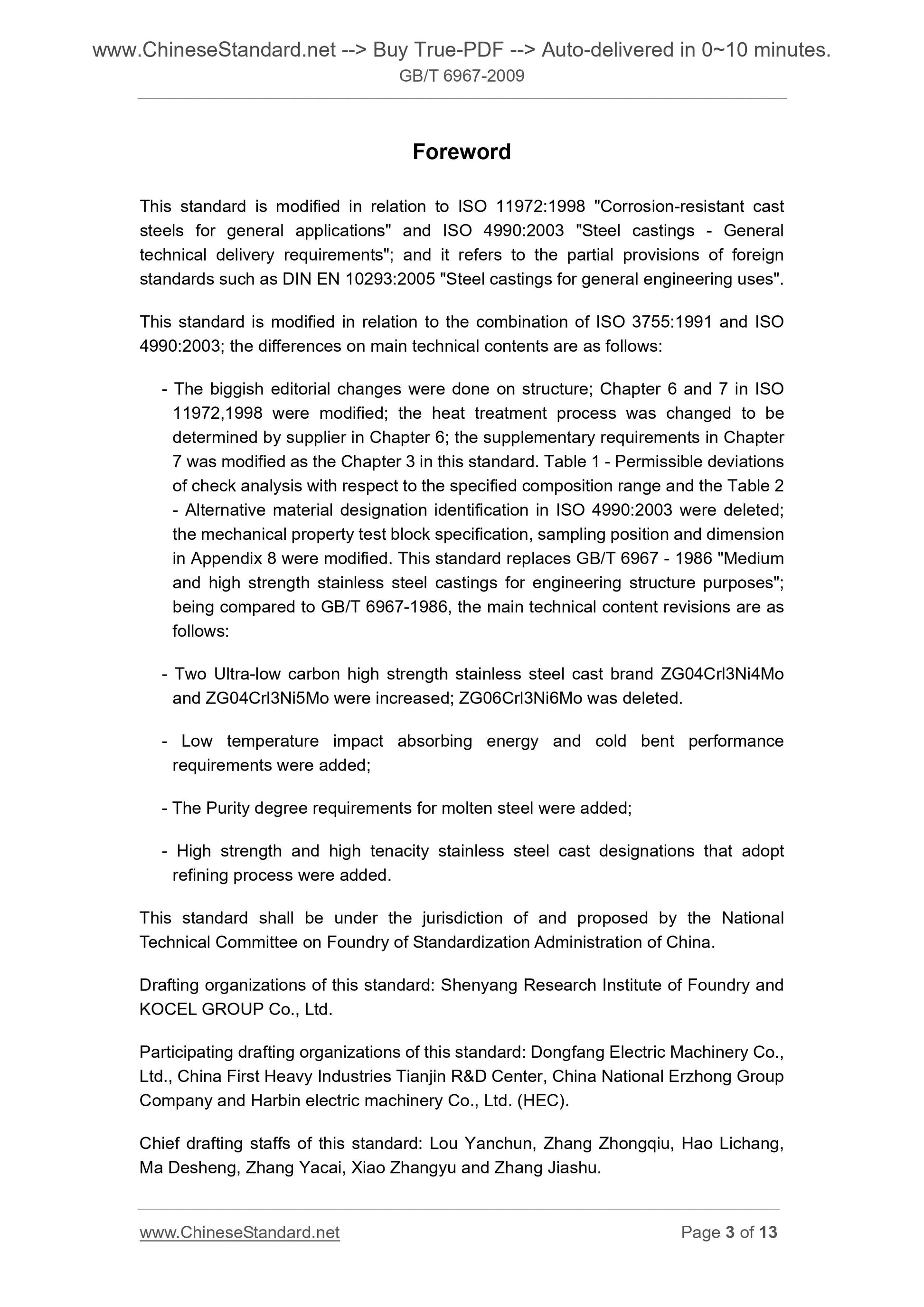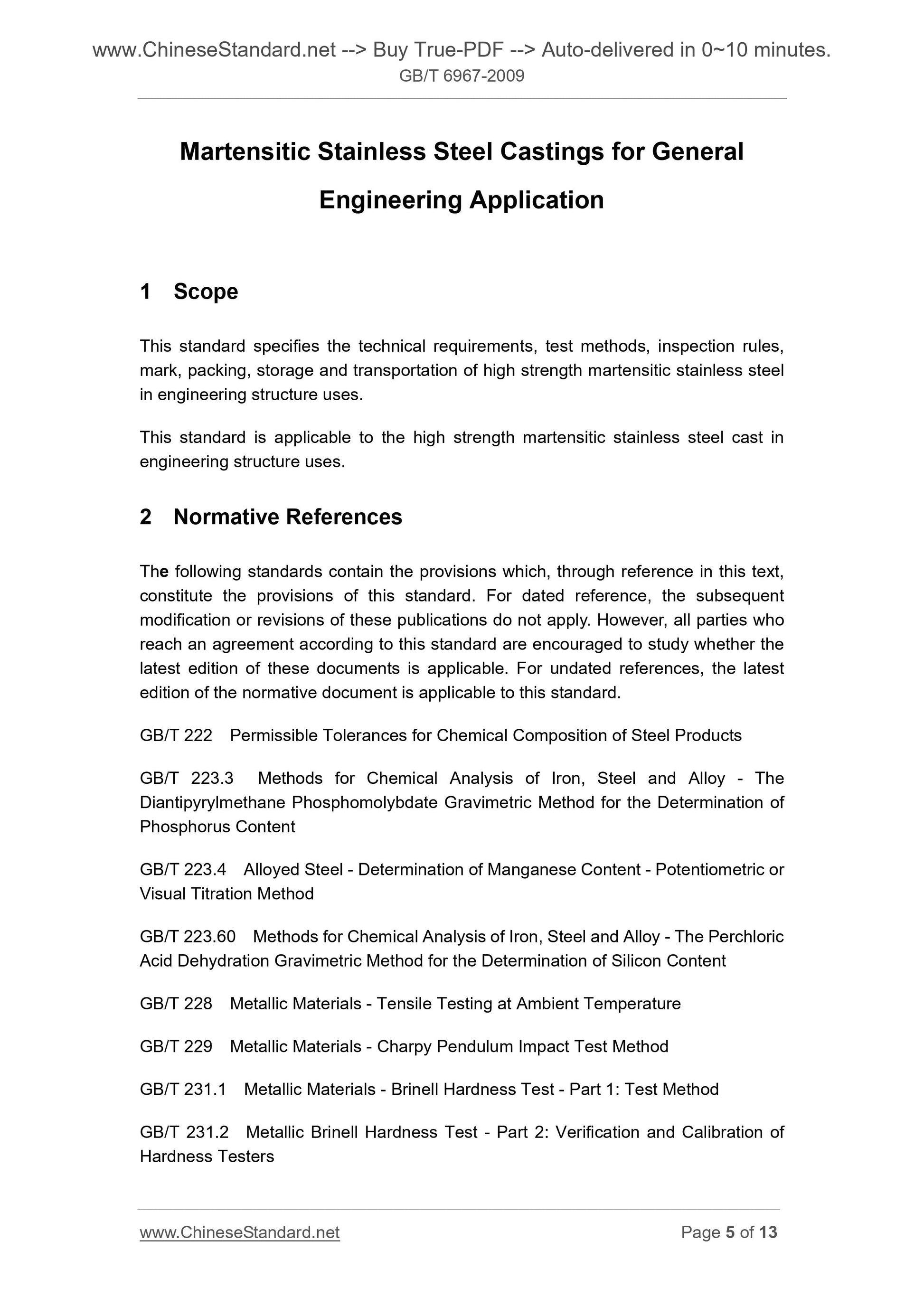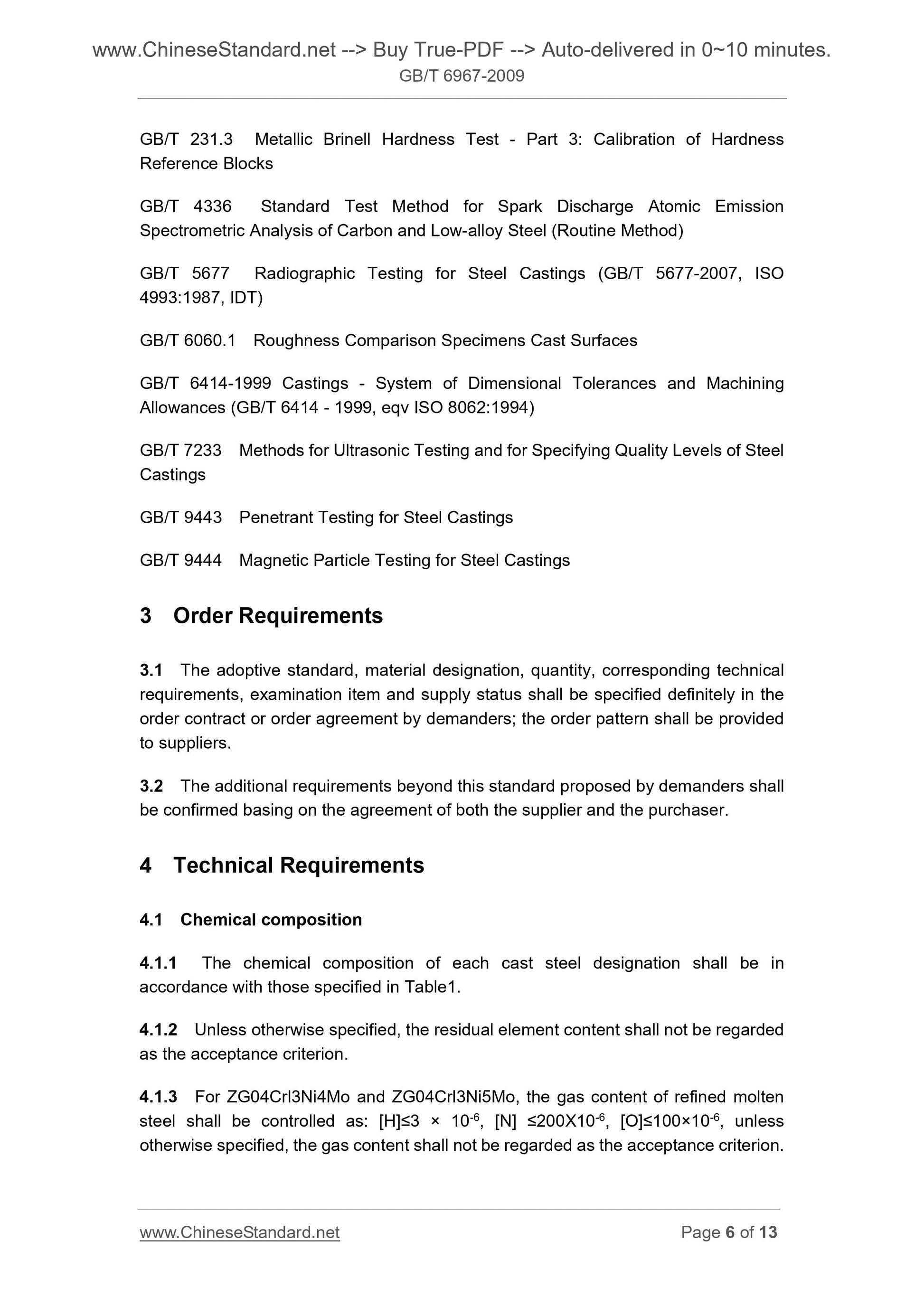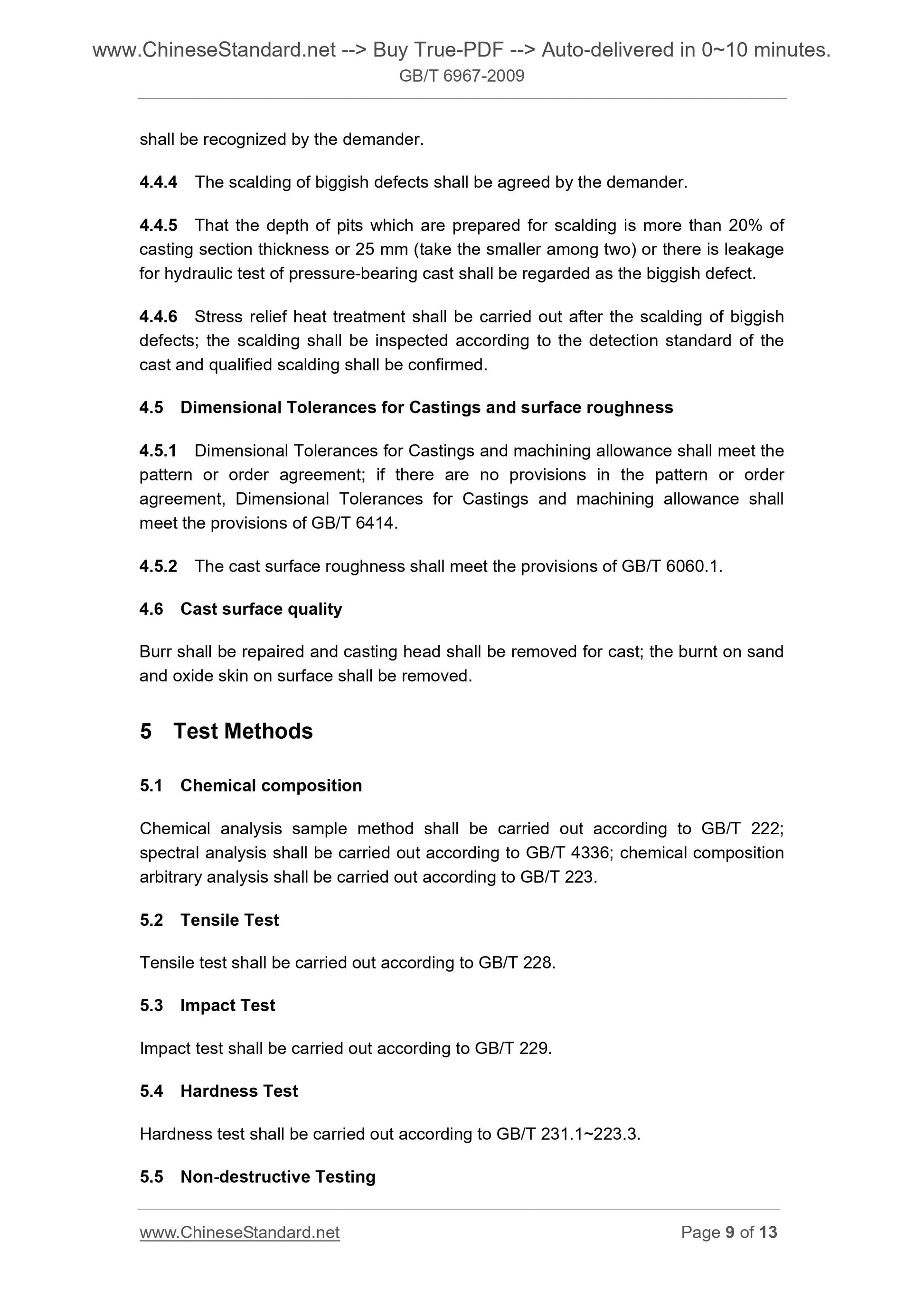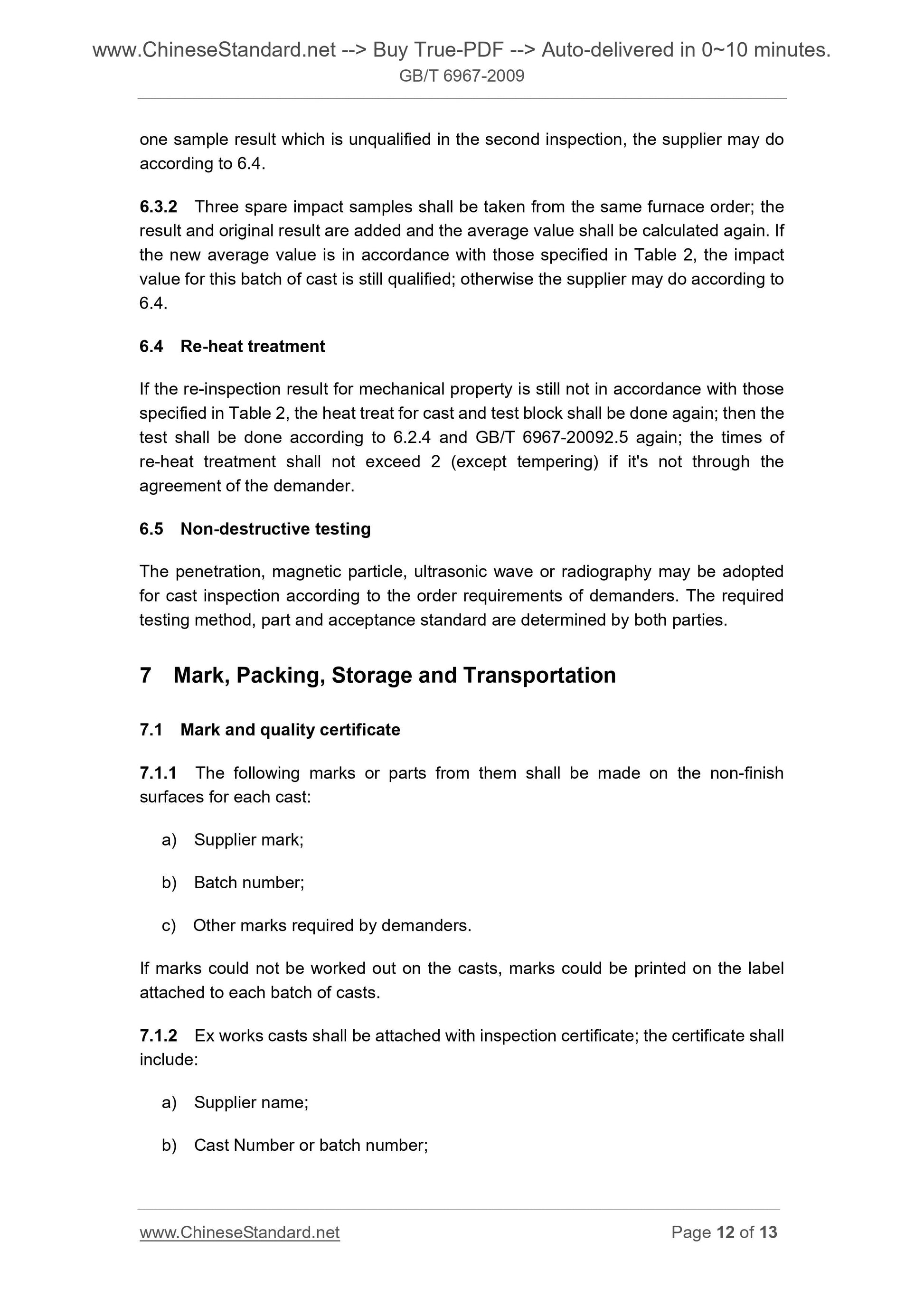1
/
of
7
www.ChineseStandard.us -- Field Test Asia Pte. Ltd.
GB/T 6967-2009 English PDF (GB/T6967-2009)
GB/T 6967-2009 English PDF (GB/T6967-2009)
Regular price
$75.00
Regular price
Sale price
$75.00
Unit price
/
per
Shipping calculated at checkout.
Couldn't load pickup availability
GB/T 6967-2009: Martensitic stainless steel castings for general engineering application
Delivery: 9 seconds. Download (and Email) true-PDF + Invoice.Get Quotation: Click GB/T 6967-2009 (Self-service in 1-minute)
Newer / historical versions: GB/T 6967-2009
Preview True-PDF
Scope
This standard specifies the technical requirements, test methods, inspection rules,mark, packing, storage and transportation of high strength martensitic stainless steel
in engineering structure uses.
This standard is applicable to the high strength martensitic stainless steel cast in
engineering structure uses.
Basic Data
| Standard ID | GB/T 6967-2009 (GB/T6967-2009) |
| Description (Translated English) | Martensitic stainless steel castings for general engineering application |
| Sector / Industry | National Standard (Recommended) |
| Classification of Chinese Standard | J31 |
| Classification of International Standard | 77.140.80 |
| Word Count Estimation | 8,865 |
| Date of Issue | 2008-12-31 |
| Date of Implementation | 2009-09-01 |
| Older Standard (superseded by this standard) | GB/T 6967-1986 |
| Adopted Standard | ISO 11972-1998, MOD; ISO 4990-2003, MOD |
| Regulation (derived from) | National Standard Approval Announcement 2009 No.2 (Total No.142) |
| Issuing agency(ies) | General Administration of Quality Supervision, Inspection and Quarantine of the People's Republic of China, Standardization Administration of the People's Republic of China |
| Summary | This standard specifies the use of engineering structures, high strength martensitic stainless steel castings technical requirements, test methods, inspection rules and signs, packaging and storage. This standard applies to engineering structures with high strength martensitic stainless steel castings. |
Share

